- This event has passed.
May 2022 Technical Seminar
May 19, 2022
Speaker: Roger H. French
Topic: Computer Vision and Machine Learning: Photovoltaic Degradation Quantified Using Electroluminescent Images
Abstract: Data Science can be applied to small or large datasets and at the SDLE Research Center our focus on Lifetime & Degradation Science (L&DS)1 requires analysis of large time-series, spectral and image datasets. For L&DS research we use Hadoop2, Hbase and Spark v2.2 to ingest, analyze and model these in our Common Research Analytics and Data Lifecycle Environment (CRADLE) 2 which (version 2.2) has 92 TB of disk storage, 180 cores and 2 Tb of RAM. The three major tasks of CRADLE is: 1) to store large volumes of de-identified and diverse datasets 2) to efficiently query, analyze and model these data. 3) to write back analytical results and metadata. Hbase is a NoSQL database which stores data as triples, enables sparse tables and doesn’t have fixed table schema. CRADLE is embedded in the CWRU HPC cluster providing access to 4000 CPU cores and 100,000 GPU cores, we run parallel analyses using fleets of SLURM jobs.
Electroluminescent (EL) imaging of PV modules can provide insights to degradation mechanisms, but has only recently been quantitatively analyzed.3 We have built an automated pipeline for image processing using computer vision to extract high dimensional features which best describe these images followed by supervised and unsupervised machine learning. 4 Supervised classification of PV cells into corroded, cracked and good (non-degraded) classes, Support Vector Machine (SVM) showed an accuracy of 98% and was 10 times faster than Convolutional Neural Networks (CNN). For unsupervised classification features are extracted from PV cell images using Gray Level Co-Occurrence Matrix (GLCM), followed by principal component analysis (PCA) on the extracted features to reduce the dimensionality.5 Hierarchical clustering is then applied on the principal components to cluster the images into degraded and non-degraded PV cells. The coherence of the hierarchical clusters is 78 %.
